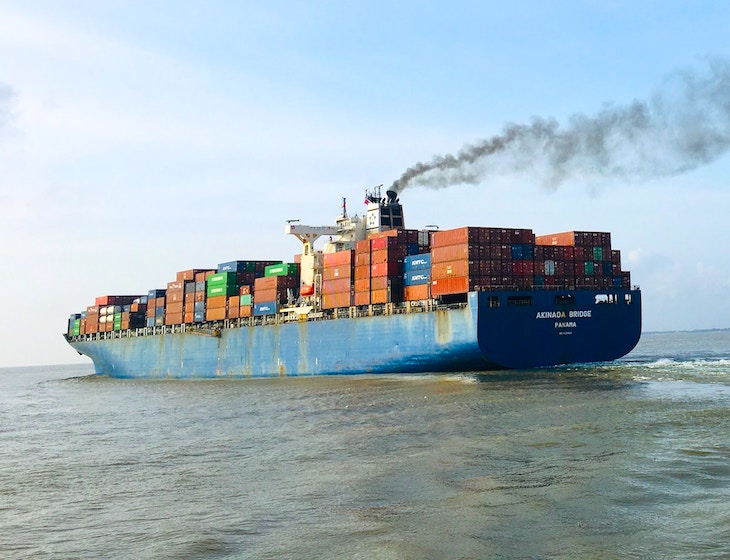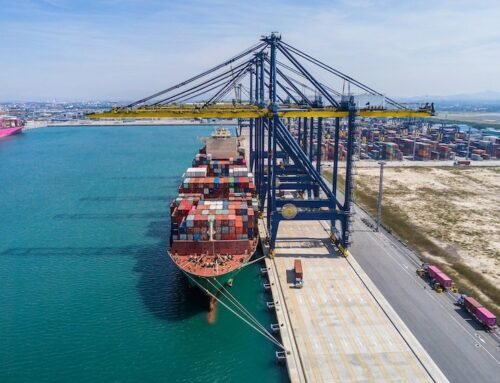We review the lifespan on container ships, the merits of owning older tonnage and why ship demolitions are expected to hit an all-time high in 2024/5.
What is the Lifespan of a Container Ship?
The lifespan of a container ship can vary based on several factors such as maintenance, technological advancements, and operational demands. Typically, container ships are built to have a service life ranging from 20 to 30 years, but some vessels can operate for longer periods with proper maintenance and refurbishment.
After a certain age, container ships might face increased maintenance costs and decreased efficiency due to wear and tear. At that point, some ships may be retired or sold to other operators who might use them for different purposes or in less demanding routes. Additionally, advancements in technology and changes in regulations may also influence the lifespan of container ships as newer vessels can offer increased efficiency and lower operating costs compared to older ones.
Who Owns the Most Elderly Vessels?
Earlier this month, Alphaliner reported that approximately 20% of the containership fleet capacity, equating to nearly 3 million TEU, has reached the age of 20 years or more. This aging category comprises around 1,200 containerships.
MSC stands out as the largest owner of this older fleet segment, holding control over nearly 25% of it on a global scale. Specifically, MSC manages 212 vessels, totaling a capacity of 718,000 TEU, which are aged 20 years or older. A significant portion of this capacity was acquired during the company’s purchasing spree in August 2020, where they bought 330 vessels, with 145 of them being 20 years old or more.
Maersk comes in as the second-largest owner of older tonnage, owning 48 vessels, while Evergreen follows closely with 36 ships.
(The Alphaliner report highlighted that only a small number of vessels aged 20 years or older had undergone retrofitting for decarbonisation purposes, and fewer than 100 ships had been equipped with scrubbers.)
What are the Merits for Owning Older Ships?
There are some advantages for shipping lines using older vessels, although these advantages need to be balanced against potential drawbacks.
Cost-effectiveness: Older vessels are often already paid off or have significantly lower purchase costs compared to newer ships. This can reduce the financial burden on shipping lines, especially if they’re operating in markets where freight rates are lower.
Versatility: Older vessels might be more versatile and suitable for certain routes or cargo that do not require the latest technology or high speeds. They can be employed in less demanding trade lanes or niche markets where the demand for shipping services might not necessitate the use of newer, more advanced vessels.
Availability: In times of high demand and limited availability of newer ships, older vessels can provide a quick solution for shipping lines to expand their fleet and meet short-term demand without the waiting time for new ship construction.
However, there are notable drawbacks to using older vessels:
Operational Costs: Older vessels tend to have higher operating costs due to increased fuel consumption and maintenance expenses. They might be less fuel-efficient and require more frequent repairs and maintenance to stay operational.
Regulatory Compliance: Older ships might not meet the latest environmental or safety regulations, requiring costly retrofitting or modifications to comply with newer standards. This can be a significant financial burden for shipping lines.
Depreciation in Value: As vessels age, their value decreases, making them less attractive for resale or financing purposes. Additionally, older ships might not command higher charter rates or attract as many customers due to concerns about reliability and efficiency.
Ultimately, while older vessels might offer initial cost advantages, shipping lines need to carefully consider the trade-offs between cost savings and potential higher operating expenses and regulatory compliance issues when using older ships in their fleets.
Old Ship Scrapping Set to Rise
Over the past two years, very few container ships were dismantled due to the surging demand on trade lanes. However, with the now quieter market and the large amount of additional capacity from the arrival of new vessel deliveries, Drewry has forecasted that ship demolitions will hit an all-time high in 2024/5.
We have already seen a big jump in vessel scrapping in 2023 compared with 2022 and analysts predict a further increase to approximately 160 ships next year, with a similar level expected in the subsequent year. This rise in scrapping is anticipated due to the arrival of new vessels, particularly those with capacities around 15,000 TEU, which will replace older vessels falling within the 5,100-7,500 TEU range.
Within the 5,100-7,500 TEU size range, there are currently 145 ships totalling 880,000 TEU that have surpassed the 20-year mark. Comparatively, there are only 28 ships in the higher size range of 7,500-10,000 TEU that are over 20 years old. Historically, the average age for scrapping vessels has been 17.5 years old.
With the global fleet poised for continued new build deliveries, the anticipation is for sustained high demand in the demolition market.








